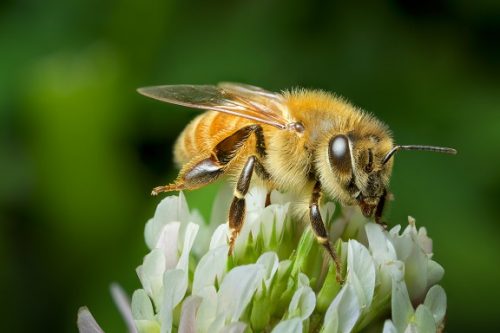Honeybees are essential for American agriculture, adding approximately $15 billion dollars worth of value to crops each year via pollination. However, since 2006, bee colonies have been suffering large losses in population. A combination of factors, including pesticides, climate change and diseases have been thought to play a role. Now, a new study conducted by researchers from Penn State and the U.S. Department of Agriculture has found that a class of chemicals previously considered inert may also share the blame. Called organosilicone surfactants (OSSs), these agrochemicals make pesticides more effective, but they may also make bee larvae more susceptible to viral pathogens.
“In California, OSSs are frequently applied to blooming almond flowers during the largest pollination event in the United States. We knew that after this event, honeybee larvae were dying,” said Julia Fine, lead author of the study. The researchers found that OSS exposure reduced immunity and increased levels of the lethal Black Queen Cell Virus in larvae, indicating that continued OSS use may be dangerous for bee colonies nationwide.
Commenting on the research, Graeme Berlyn, Yale professor of Forest Management and Tree Physiology, stated that while adjuvants may help to grow more food, their continued use puts valuable crop pollinators at risk. “In the long term, we have to stop polluting our soils and atmosphere,” Berlyn said.
Further research on OSS safety and analysis of residue levels in bee environments could be key in reversing colony collapse.

